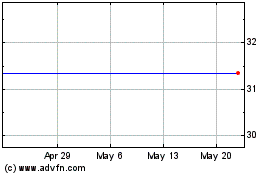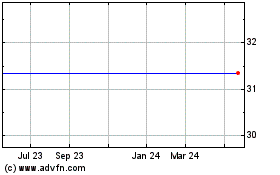IMS Health Forecasts Global Drug Spending to Increase 30 Percent by 2020, to $1.4 Trillion, As Medicine Use Gap Narrows
19 November 2015 - 12:00AM
Business Wire
Global Patient Use Will Reach 4.5 Trillion
Doses, Up 24 Percent from 2015; Increased Innovation, Access to
Cheaper Medicines and Technology To Drive Unprecedented Healthcare
Value
More than half of the world’s population will live in countries
where medicine use will exceed one dose per person per day by 2020,
up from 31 percent in 2005, as the “medicine use gap” between
developed and pharmerging markets narrows. According to new
research released today by the IMS Institute for Healthcare
Informatics, total spending on medicines will reach $1.4 trillion
by 2020 due to greater patient access to chronic disease treatments
and breakthrough innovations in drug therapies. Global spending is
forecast to grow at a 4-7 percent compound annual rate over the
next five years.
The report, Global Medicines Use in 2020: Outlook and
Implications, found that total global spend for pharmaceuticals
will increase by $349 billion on a constant-dollar basis, compared
with $182 billion during the past five years. Spending is measured
at the ex-manufacturer level before adjusting for rebates,
discounts, taxes and other adjustments that affect net sales
received by manufacturers. The impact of these factors is estimated
to reduce growth by $90 billion, or approximately 25 percent of the
growth forecast through 2020.
“During the next five years, we expect to see a surge of
innovative medicines emerging from R&D pipelines, as well as
technology-enabled advances that will deliver measurable
improvements to health outcomes,” said Murray Aitken, IMS Health
senior vice president and executive director of the IMS Institute
for Healthcare Informatics. “With unprecedented treatment options,
greater availability of low-cost drugs and better use of evidence
to inform decision making, stakeholders around the world can expect
to get more ‘bang for their medicine buck’ in 2020 than ever
before.”
In its latest study, the IMS Institute highlights the following
findings:
- Global medicine use in 2020 will
reach 4.5 trillion doses, up 24 percent from 2015. Most of the
global increase in use of medicines over the next five years will
take place in pharmerging markets, with India, China, Brazil and
Indonesia representing nearly half of that growth. Volumes in
developed markets will remain relatively stable and trend toward
original branded products as use of specialty medicines becomes
more widespread. Generics, non-original branded and over the
counter (OTC) products will account for 88 percent of total
medicine use in pharmerging markets by 2020, and provide the
greatest contribution to increased access to medicines in those
countries. Newer specialty medicines, which typically have low
adoption rates in pharmerging countries lacking the necessary
healthcare infrastructure, will represent less than one percent of
the total volume in those markets.
- Global spending will grow by 29-32
percent through 2020, compared with an increase of 35 percent in
the prior five years. Spending levels will be driven by branded
drugs primarily in developed markets, along with the greater use of
generics in pharmerging markets—offset by the impact of patent
expiries. Brand spending in developed markets will rise by $298
billion as new products are launched and as price increases are
applied in the U.S., most of which will be offset by off-invoice
discounts and rebates. Patent expiries are expected to result in
$178 billion in reduced spending on branded products, including $41
billion in savings on biologics as biosimilars become more widely
adopted. Many of the newest treatments are specialty medicines used
to address chronic, rare or genetic diseases and yielding
significant clinical value. By 2020, global spending on these
medicines is expected to reach 28 percent of the total.
- More than 90 percent of U.S.
medicines will be dispensed as generics by 2020. Generic
medicines will continue to provide the vast majority of the
prescription drug usage in the U.S., rising from 88 percent to
91-92 percent of all prescriptions dispensed by 2020. Spending on
medicines in the U.S. will reach $560-590 billion, a 34 percent
increase in spending over 2015 on an invoice price basis. While
invoice price growth – which does not reflect discounts and rebates
received by payers – is expected to continue at historic levels
during the next five years, net price trends for protected brands
will remain constrained by payers and competition, resulting in 5-7
percent annual price increases. The impact of the Affordable Care
Act (ACA) will continue to have an effect on medicine spending
during the next five years largely due to expanded insurance
coverage. By 2020, there will be broad adoption of ACA provisions
that encourage greater care coordination and movement of at least
one-third of spending to an outcomes or performance basis.
- More than 225 medicines will be
introduced by 2020, with one-third focused on treating cancer.
Disease treatments in 2020 will be transformed by the increased
number and quality of new drugs in clusters of innovation around
cancer, hepatitis C, autoimmune disorders, heart disease and an
array of rare diseases. During the next five years, an additional
75 new orphan drugs are expected to be available for dozens of
therapeutic areas that currently have limited or no treatment
options. By 2020, technology will be enabling more rapid changes to
treatment protocols, increasing patient engagement and
accountability, shifting patient-provider interaction, and
accelerating the adoption of behavior changes that will improve
patient adherence to treatments. Every patient with multiple
chronic conditions will have the potential to use wearables, mobile
apps and other technologies to manage their health, interact with
providers, fellow patients and family members. The ubiquity of
smartphones, tablets, apps and related wearable devices, as well as
electronic medical records and exponentially increasing real-world
data volumes, will open new avenues to connect healthcare while
offering providers and payers new mechanisms to control costs.
The full report, including a detailed description of the
methodology, is available at www.theimsinstitute.org. It can also
be downloaded as an app via iTunes at
https://itunes.apple.com/app/ims-institute/id625347542. The study
was produced independently as a public service, without industry or
government funding.
About the IMS Institute for Healthcare Informatics
The IMS Institute for Healthcare Informatics provides key policy
setters and decision makers in the global health sector with unique
and transformational insights into healthcare dynamics derived from
granular analysis of information. It is a research-driven entity
with a worldwide reach that collaborates with external healthcare
experts from across academia and the public and private sectors to
objectively apply IMS Health’s proprietary global information and
analytical assets. More information about the IMS Institute can be
found at: http://www.theimsinstitute.org.
About IMS Health
IMS Health is a leading global information and technology
services company providing clients in the healthcare industry with
end-to-end solutions to measure and improve their performance. Our
7,500 services experts connect configurable SaaS applications to
10+ petabytes of complex healthcare data in the IMS One™ cloud
platform, delivering unique insights into diseases, treatments,
costs and outcomes. The company’s 15,000 employees blend global
consistency and local market knowledge across 100 countries to help
clients run their operations more efficiently. Customers include
pharmaceutical, consumer health and medical device manufacturers
and distributors, providers, payers, government agencies,
policymakers, researchers and the financial community.
As a global leader in protecting individual patient privacy, IMS
Health uses anonymous healthcare data to deliver critical,
real-world disease and treatment insights. These insights help
biotech and pharmaceutical companies, medical researchers,
government agencies, payers and other healthcare stakeholders to
identify unmet treatment needs and understand the effectiveness and
value of pharmaceutical products in improving overall health
outcomes. Additional information is available at
www.imshealth.com.
This analysis of medicine spending is based on prices reported
in IMS Health audits of pharmaceutical spending, which are in
general reported at the invoice prices wholesalers charge to their
customers including pharmacies and hospitals. In some countries
these prices are exclusive of discounts and rebates paid to
governments, private insurers or the specific purchasers. In other
countries, off-invoice discounts are illegal and do not occur. The
mix of true prices and opaque pre-discounted prices means the
analyses in this report do not reflect the net revenues of
pharmaceutical manufacturers. As a part of this report, the IMS
Institute has compared IMS Health audited spending data to reported
sales, net of discounts, reported by publicly traded companies and
made estimates of future off-invoice discounts and rebates and
their impact on the growth of branded medicines. Analyses in this
report refer to IMS Health’s proprietary databases and services
including Market Prognosis, Therapy Prognosis and R&D Focus;
and proprietary definitions and methodologies including Specialty
pharmaceuticals, IMS Innovation Insights and Pharmerging markets.
See appendices under Definitions & Methodologies for more
detail on methodologies used throughout this report.
View source
version on businesswire.com: http://www.businesswire.com/news/home/20151118005301/en/
IMS HealthTor Constantino,
+1-484-567-6732tconstantino@us.imshealth.com
IMS HEALTH HOLDINGS, INC. (NYSE:IMS)
Historical Stock Chart
From Oct 2024 to Nov 2024

IMS HEALTH HOLDINGS, INC. (NYSE:IMS)
Historical Stock Chart
From Nov 2023 to Nov 2024
